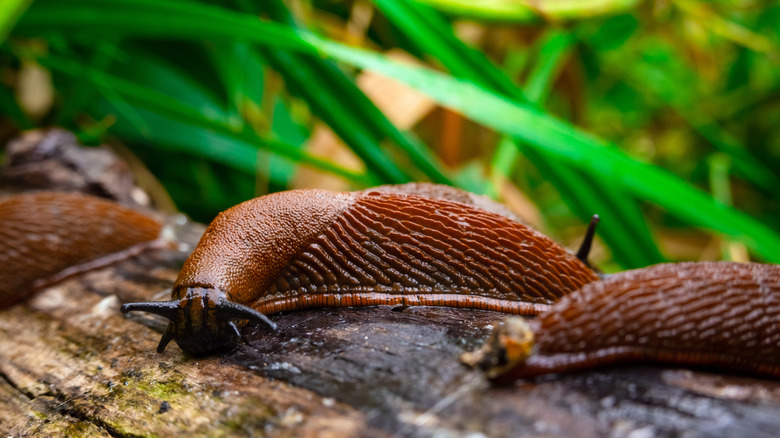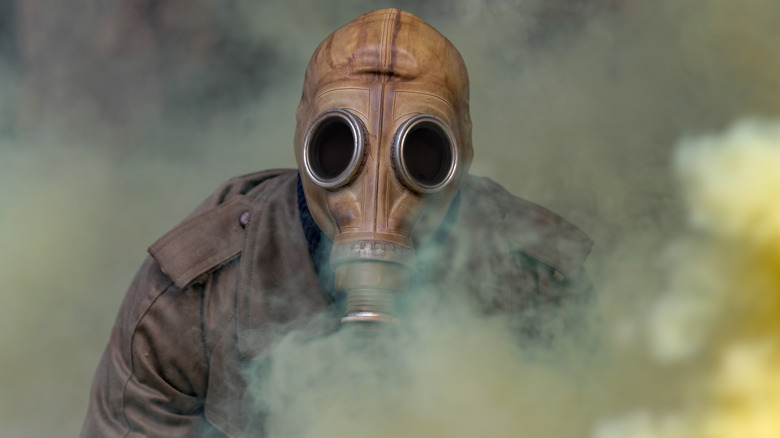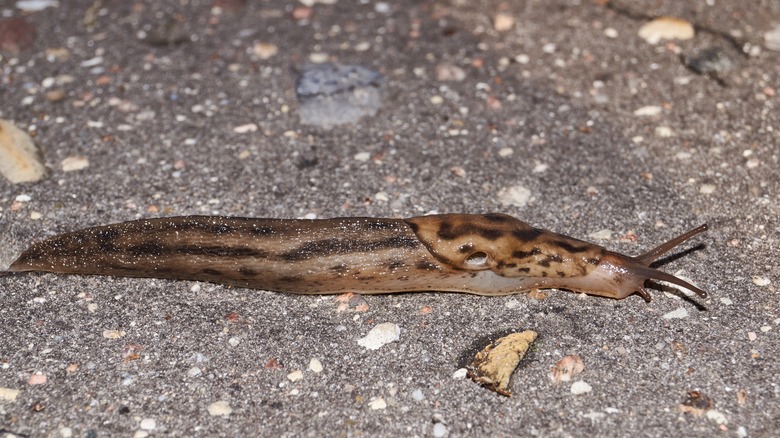How A Brigade Of Slugs Saved Lives In WWI
Many a war has been fought using slugs — the kind of slugs that ricochet from shotguns and pierce the night air, the kind of slugs that were designed by humankind as pieces of artillery. These heavy lead projectiles were once commonplace on the battlefield, claiming and saving countless lives, and occasionally giving way to protests (via History).
However, World War I featured the other kind of slug -– you know the creepy crawly critters you might find in your backyard after a soft rain. It all began when famed 20th Century malacologist Paul Bartsch encountered a group of slugs in his furnace room engaging in rather erratic behavior (per Smithsonian).
Bartsch, whose studies into mollusks have been well-documented, immediately made note of this behavior. At the time, he couldn't find an applicable use for it, but the scientist in him just found the behavior fascinating enough to jot down. Later down the line, this small discovery would lead to slugs saving lives in WWI.
Slugs could detect gas more quickly and accurately than humans
According to Smithsonian Institution Archives, what malacologist Bartsch observed in his furnace room were visible signals of distress from the slugs as they detected fumes from the gas furnace. To quote Bartsch's research directly, he stated in "Researches on Fungi, Volume 2," "The sense of smell in slugs, like that in dogs, is doubtless more acute than in human beings" (via Google Books).
Bartsch's observation notes specifically noted a slugs' sensitivity to mustard gas, the toxic fumes of which were being used for the first time during WW1 (per The National WWI Museum and Memorial). By the end of the war, Germany alone had produced 68,000 tons of mustard gas toxin which caused enemy soldiers to choke, convulse, and in some cases, collapse into violent deaths. With no known weapons to combat the odorless, invisible chemical, the United States government resorted to desperate measures by calling in a brigade of slugs.
World War I's brigade of slugs warned soldiers of gas attacks
According to American History, the time the U.S. army released slugs into the trenches in WWI came to be known as the "Slug Brigade." The move, while eccentric, likely saved thousands of lives since soldiers of that time had no clear-cut way of detecting fatal levels of mustard gas in the air.
The slugs, who were able to detect one toxic gas particle for every 10-12,000,000 particles of air, made visible gestures of torment (via Smithsonian Institution Archives). Upon detecting the toxins, these slugs would compress their bodies in order to close their breathing holes and avoid inhaling the fumes. Taking their cues from the slugs, members of WWI militia would mask up any time the slugs alerted them to the presence of mustard gas in the air particles surrounding their trenches of war.
Paul Bartsch's love of mollusks led to several discoveries for the U.S. military, from disease prevention to boat preservation and just about everything in between. But for many historians, the slug brigade will remain the most memorable of all.


